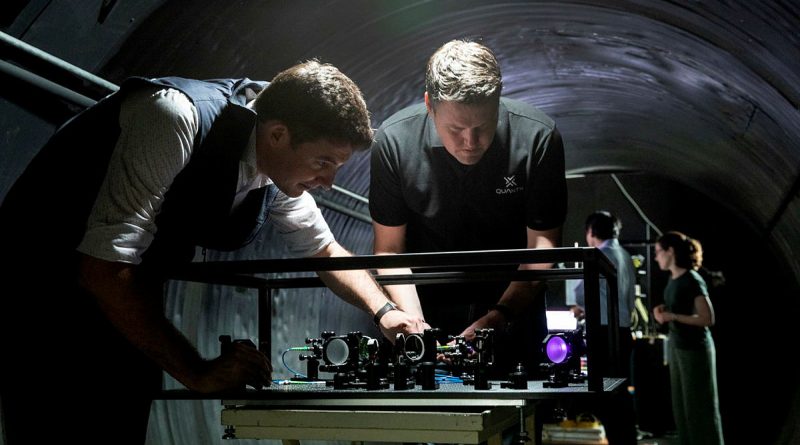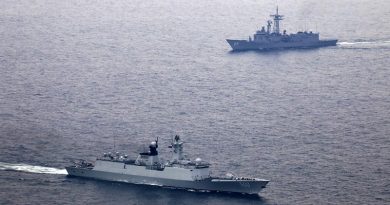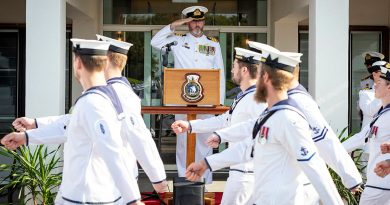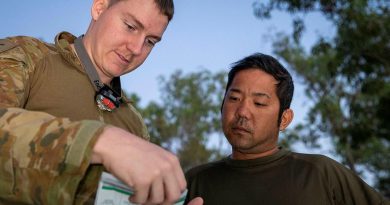Quantum leap for military time keepers

Among the fleet of warships at last year’s Rim of the Pacific Exercise (RIMPAC), one carried a pair of Australian-built quantum clocks, believed to be some of the world’s most accurate.
CAPTION: Defence Science and Technology Group scientist Dr Ben Sparkes, left, works with Australian-built quantum clocks at the University of Adelaide. Story by Corporal Luke Bellman.
They were tested aboard HMNZA Aotearoa by Dr Ben Sparkes, a quantum technologist from Defence Science and Technology Group (DSTG) working alongside a team from the University of Adelaide.
He said they saw that regular commercial clocks have poor performance on board due to ships’ movement but the Australian quantum clocks showed none of those effects, thanks to quantum clocks measuring time by movements of atoms or molecules.
Dr Ben Sparkes has worked with Defence for three years and been part of the team developing the two different quantum clocks used on the trial.
“The clocks were compared with others from our collaborators, and they held their own against the best being bought,” Dr Sparkes said.
“They performed better than the commercial benchmark at short-to-medium time-scales, especially in terms of mechanical stability.
“The team learnt a lot from RIMPAC and they are now designing bespoke parts to try and shrink everything down to make things smaller, better, faster and stronger.”
The clocks used were a rubidium clock that uses two infrared lasers and a ytterbium clock that uses a green laser.
Quantum clocks measure energy transition inside an atom, while traditional clocks measure a mechanical device that oscillates.
According to Dr Sparkes, the benefit is that atoms provide the same time anywhere in the universe.
“Each mechanical oscillator will be different to some degree,” he said.
“The two atoms we are using, the rubidium and the ytterbium, are identical anywhere in the universe. That gives us good reference.
“We effectively drive the atomic transitions using different colour laser beams, making super stable lasers.”
An additional laser, called a frequency comb, is then required to down-mix the stabilised laser frequencies from terahertz to giga and megahertz, which gives them a stable oscillating signal to read out time.
The goal is to eventually build them the same size as the commercial clocks but with better performance.
Parts for the prototypes were bought off the shelf due to a two-year time restraint, which made them bigger than intended.
The program started three years ago after the Quantum-Assured Position Navigation and Timing STaR Shot funded them to take the clocks to RIMPAC.
Recently, the rubidium clock project, now with QuantX Labs, received $3.7 million to make the clocks for satellites under the Australian Space Agency’s Moon to Mars initiative.
“Timing is important for everything we do in Defence. Currently we rely on GPS to provide this timing. However, as it comes from satellites, by the time it reaches the signals are very weak and can easily be jammed or spoofed.
“Having our own clocks allows us to stay in sync for longer without receiving GPS signals,” Dr Sparkes said.
“Ships are a good first testing platform for us because they are large.”
.
.

.
.





